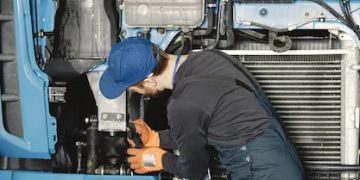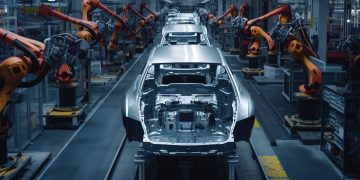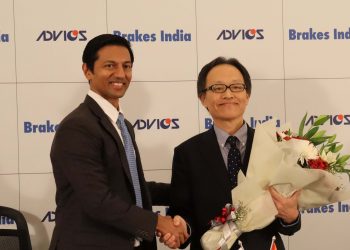A Glimpse into the Future of Auto Maintenance
The car maintenance industry is at an interesting turning point in a time when automation and artificial intelligence (AI) are hot topics. It has been thought of as a skill-centric industry in the past, but it is currently undergoing a transformation where algorithms and machine learning are replacing wrenches and screwdrivers. I wish to go in-depth through this article on the history of vehicle maintenance, the crucial role that Generative AI plays, the difficulties that lie ahead, and most importantly, the unrealized potential for human-AI collaboration to transform the industry. So, fasten your seatbelt as we go over this thrilling landscape; one would not want to miss the road ahead.
The Evolutionary Journey of Auto Maintenance
Since the invention of the automobile, major changes have been made in automotive maintenance. When the first cars were created in Europe in the late 1800s, maintenance was difficult because of how new these machines were. Early car owners frequently had to learn how to repair their own vehicles on their own. The demand for expert mechanics increased quickly when Henry Ford brought more affordable, simpler vehicles to America.
In the past, mechanics were known as “grease monkeys” and were mostly responsible for the more basic mechanical functions of automobiles. Even colleges and ITIs (vocational) provided auto shop courses to teach the fundamentals of internal combustion engines. The mechanic’s job evolved as vehicles became more complicated and had more intricate systems, though. The skills that today’s technicians must possess include data retrieval, record-keeping, and vehicle diagnostics as well as mechanical and technical knowledge. As a result of this transition in the industry, mechanics are now frequently expected to have a formal education from vocational institutes, technical colleges, or universities. The value of certifications, like those provided by institute like the College of Engineering, Pune; VIT Vellore; PSG Tech, Coimbatore; DTU Delhi; BITS Pilani, has increased.
Additionally, the sector has benefited from developments like mobile mechanics, who bring the repair shop to the consumer and increase service accessibility. The field of automotive maintenance is anticipated to continue evolving with the introduction of electronic and autonomous vehicles, necessitating the adaptation of mechanics to new systems and technology.
AI’s Rising Tide in Various Industries
Generative AI is a subset of artificial intelligence that can generate new data based on existing patterns. Generative AI has the ability to completely change how we approach repairs and diagnostics in the context of vehicle maintenance. In addition to being a tool for automation, generative AI also stimulates human ingenuity and problem-solving. Harvard Business Review claims that, as opposed to merely copying or replacing the human experience, generative AI can enhance, grow, and extend it. The secret is in how human-centric traits like imagination, curiosity, and compassion work in concert with AI’s processing power. Instead of weakening human capacities, this collaborative method enhances them. The emphasis is on how humans and robots may work together to build strong, successful, and productive organisations rather than on the disparities between them.
Fields of Successful or Potential Human-AI Collaboration
Healthcare: AI can support clinical decision-making, allowing medical professionals to more accurately diagnose and treat patients’ illnesses. Based on a patient’s medical background and present state, it can also offer individualised treatment regimens.
Education: Using AI, learning experiences may be tailored to the needs and learning styles of each learner. This improves the effectiveness and efficiency of the instructional process.
Business: In the business world, AI may examine consumer behaviour, market trends, and other pertinent data to offer insights that can be put to use. This gives companies a competitive edge by enabling them to make educated decisions.
Creative Industries: AI can help authors, designers, and painters by coming up with early concepts or rough drafts that humans can later develop and polish.
Research & Development: Artificial Intelligence (AI) can process and analyze enormous datasets considerably more quickly than a person, giving academics useful information to help them in their work.
Public Safety: Artificial Intelligence (AI) may evaluate data from multiple sources to forecast criminal activities or natural disasters, assisting authorities in taking preventative steps.
AI can evaluate climate data to forecast environmental changes, enabling environmental conservationists to take prompt action.
The idea of Human-AI Teaming (HAT), which emphasises that AI should
work as a teammate rather
than as a tool, is gaining popularity. This strategy enhances human potential and improves team performance beyond what either entity could achieve on its own.
AI to the Rescue: Solving Auto Maintenance Challenges
The issues faced by the Original Equipment Manufacturers (OEMs), customers, mechanics, workshop owners, and other players in the vehicle maintenance industry are numerous. Because of the quick changes in automotive technology, mechanics frequently face a skill gap. Modern electronic systems are complex, making diagnostics difficult and conventional troubleshooting techniques time-consuming. Due to the necessity for sophisticated diagnostic equipment, workshop operators incur significant operational costs and struggle with client retention if diagnosis and repairs are not reliable. Customers, on the other hand, frequently experience a state of uncertainty as a result of the repair process’ lack of transparency, which breeds mistrust and drives up expenses. OEMs are concerned with quality control and the systematic collection of reliable data on common issues for future designs.
The use of Artificial Intelligence (AI) provides an appealing answer to these problems. AI serves a purpose in mechanics that goes beyond that of a simple diagnostic tool. Through augmented reality interfaces, it can act as a platform for interactive learning that provides on-the-job training. Imagine a technician working on a vehicle while donning smart glasses that provide real-time data and step-by-step repair instructions. This improves the mechanic’s abilities and lowers the margin for error, guaranteeing that repairs are made in accordance with industry standards. AI can also help with inventory management by foretelling which components will likely be required for subsequent repairs, allowing mechanics to plan ahead. This level of readiness can drastically save downtime and increase the repair procedure’ overall effectiveness.

With AI integration, workshop owners can also see significant benefits. AI can provide business intelligence solutions in addition to the immediate benefits in diagnosis and repair. AI algorithms, for instance, can examine consumer behavior, repair histories, and even regional market patterns to offer useful insights. This information can assist workshop owners in making strategic decisions, such as when to run promotions, which services to highlight, or how to best staff their facilities depending on anticipated workloads. Additionally, AI has the ability to automate administrative processes like appointment scheduling, billing, and customer follow-ups, freeing workshop owners to concentrate on their main company operations. This degree of automation can greatly increase operational effectiveness and help create a more streamlined, user-friendly service environment.
When these extra factors are taken into account, AI’s impact on car maintenance is much more revolutionary. It is important for mechanics to have an all-encompassing support system that helps with skill development, inventory management, and efficiency, not simply a diagnostic helper. AI transforms into a strategic partner for workshop owners, providing operational and business intelligence solutions, automating clerical work, and supporting data-driven decision-making.
The increased openness that AI can offer will benefit customers. Sharing a thorough, AI-generated analysis of the vehicle’s condition with the buyer can foster trust, guarantee that only necessary repairs are made, and ultimately reduce expenses. OEMs can use AI for data-driven decision-making and quality control. OEMs can enhance their designs by using AI algorithms to provide insights into typical mechanical problems. Additionally, the systematic gathering and examination of repair data might provide important insights for upcoming vehicle designs.
Navigating the Ethical Maze: Challenges and Concerns
It is critical to address the issues and ethical concerns that come with this technological integration as we picture a future in which AI plays a significant role in vehicle maintenance.
Data privacy and security is one of the main issues. Numerous sensitive pieces of information, such as car specifications, customer data, and maybe even real-time telematics, will be handled by automotive workshops. It is crucial to ensure the safe transmission and storage of this data. Any violation could result in not only financial losses but also seriously harm the workshop’s brand and decrease client trust.
Potential job displacement is another challenge. Despite the fact that AI can improve human capabilities, some people worry that it may eventually displace low-skilled jobs, especially those that require mundane labor. This raises moral concerns concerning workshop owners’ social responsibilities to retrain or reskill their staff to accommodate the changing technology environment.
Another ethical issue with AI is bias in its algorithms. The AI systems might advocate actions that are not in the best interests of the consumer or the vehicle if they were trained on biased or unreliable data. For instance, recommending pointless repairs based on biased data may cause ethical and legal issues.
Transparency is a key ethical consideration. Both mechanics and customers have the right to understand how decisions are being made by the AI systems. When it comes to diagnostics and repair recommendations, this is especially crucial. The potential advantages of collaborating between humans and AI could be undermined by a lack of openness, which could breed distrust and skepticism.
Accountability is yet another important factor. It should be obvious whether a mistake or failure was made by a human mechanic, an AI system, or a combination of both. Liability issues, customer relations, and legal status may all be impacted by this.
The issue of accessibility is the last. The high expenditures of developing cutting-edge AI systems may result in a split between big, well-funded workshops and independent, smaller ones. This might create an unfair competitive environment in the sector, creating moral concerns
about equitable access to technology.

Embracing a Future of Collaboration
It is obvious as we look into the future that the vehicle repair industry will not only be about technical know-how or cutting-edge AI algorithms, but a perfect blend of both. The future holds unheard-of opportunities for human-AI collaboration, despite difficulties and ethical concerns. In this future, the analytical and computational prowess of AI will enhance human intuition and skills. Together, they might create a landscape where everyone benefits, from workshop owners and OEMs to mechanics and customers, and redefine efficiency, accuracy, and customer pleasure. Therefore, let us design this future instead of just dreaming about it, one algorithm, one bolt, and one creative human leap at a time. It is not just about surviving the wave of change; it is about riding it to a horizon brimming with possibilities.
AUTHOR

SAYANTAN MUKHERJEE
Academic Director
National Institute of Innovation and
Entrepreneurship Management
(NIIEM)



























































